This post was originally published on Baseline Physiotherapy to raise awareness of Ehlers Danlos Syndrome. May is EDS Awareness Month. To learn more about EDS Hypermobility type (the type of EDS I have been diagnosed with) please visit the Hypermobility Syndromes Association.
Growing up I knew that I was double jointed. I used to think it was pretty cool that I could make my thumb touch my wrist.
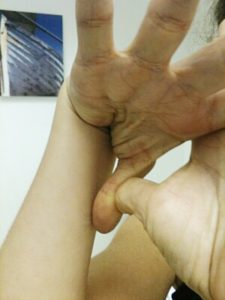
But growing up Gumby (bendy, like the green character named Gumby in the photo below) had its drawbacks too.

By the time I was 13 I had dislocated my knees more times than I could count, so my doctor advised release surgery in the hopes of controlling the number of traumas I was experiencing.
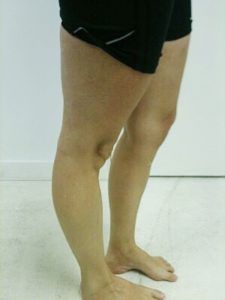
At that time – as an awkward, often injured, just turned teenager – I jumped on the chance to have a doctor’s note to get out of physical education classes. I happily exempted myself from running our sophomore mile (a mile fitness test for all 15-16 year old students in my school). And even though my doctor suggested that I do strength work to help to make my joints more stable, let’s face it – I just was not interested.
I spent most of my life managing bad knees, but in 2007 I added a new “bad joint” to my list of niggles. I fell and wound up rotationally dislocating my elbow. My elbow dislocation left me feeling very disabled – every time I used my left arm I was at risk of injury. Reach to open a door? Dislocate. Rolling out a pie crust? Dislocate. Reaching for my toes to stretch my legs? Dislocate.
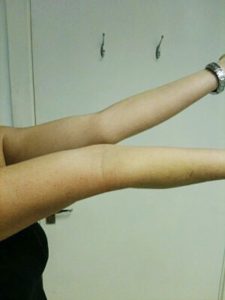
When I consulted with an elbow and shoulder doctor about how to best manage this injury, he did a fairly standard diagnostic test (the Beighton assessment) which notes ranges of motion in major joints. I scored 9 out of 9 and received a diagnosis of Ehlers Danlos Hypermobility type.
When I received my diagnosis of EDS-H, I learned that my dislocating joints were the result of flawed connective tissues. Just like my doctor told me when I was 13 – the advice I happily ignored back then – it turns out the best way to manage EDS is with regular exercise, in particular work on strength (to protect joints) as well as core stability.
Since 2007 I have been working to embrace an active healthy lifestyle – to keep moving in order to keep on moving. Part of this has included FINALLY embracing a solid strength and conditioning programme. To my surprise I actually LOVE this part of my workout routine – my thirteen year old self would be amazed!
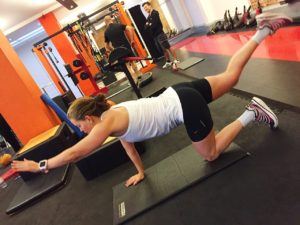
A consistent strength and core conditioning routine has helped me to increase the amount of exercise I do as well as the intensity while staying (relatively) uninjured. And as I set myself new and challenging goals – such as the 5km Marseille sea swim I have planned for June, and the 10km Dart river swim I have planned for September – core strength and joint stability are proving increasingly important for me.
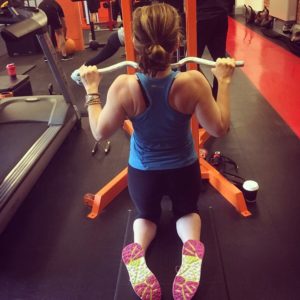
A few messages I’d like to leave to all those who grow up Gumby, to the doctors and therapists that treat them, and especially to my thirteen year old self:
1. Don’t simply accept that doctor’s note and opt out of exercise. With the advantage of hindsight – and being able to compare my life today with the life without exercise that I lived for nearly 25 years – I can hand-over-heart say that movement is medicine. And with this medicine, seemingly unthinkable goals – like doing a 5k or 10k swim – start to seem like completely realistic challenges.
2. Don’t be afraid. It is hard to take the first step and to seek help, to explain the problems you have. But don’t be afraid to ask for help. Don’t be afraid to tell people what you are experiencing. If you need to, bring a family member or friend with you to help you feel supported. But don’t be afraid to start. Seeking help can enable us to improve the quality of our life.
3. Find a team. Make one. Get everyone that you talk with on your side – doctors, physiotherapists, local fitness shops, your gym, your friends. When you create your own team, you never feel alone. And when you have a team and the support that a team can offer, I’m convinced that what you consider impossible today could become achievable tomorrow.
4. When it comes to activity, ANYTHING is better than NOTHING. Movement is free medicine – and far less invasive and far less painful than the surgery that could result from injuries triggered by instabilities that could have been managed with exercise.
